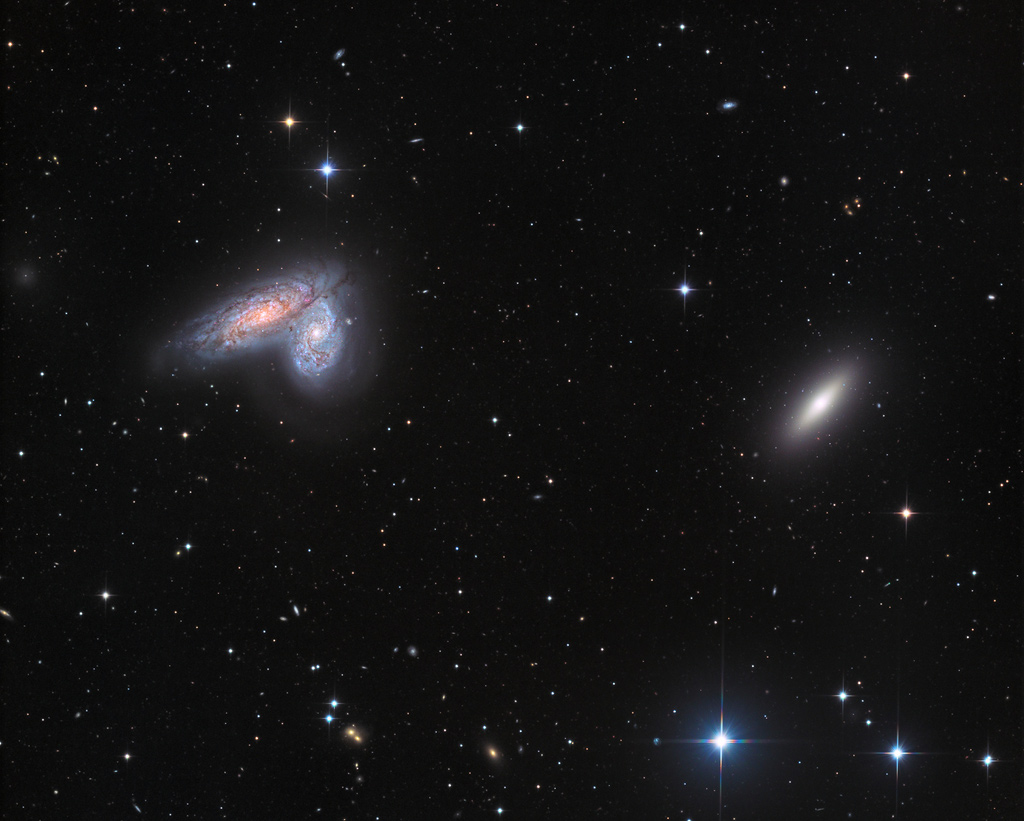
2019年1月31日 星期四
Twin Galaxies in Virgo

CASIS Now Has An Official Fictitious Name
FYI @ISS_CASIS asked @NASA if they could change their name from "CASIS" to "ISS National Laboratory". #NASA said no - but Joe Vockley at CASIS did so anyway. Now his staff is scrambling to explain this unauthorized name change in time for the #CASIS annual meeting in DC next week pic.twitter.com/ccpb3cthKG
— NASA Watch (@NASAWatch) January 31, 2019
Looks like @ISS_CASIS filed a "fictitious name registration for "ISS National Laboratory" on 1/12/2019 using a Missouri address https://t.co/SIhdhUSFoY and then yesterday 1/30/2019 (after @NASAWatch noticed) they filed another one using a Florida address https://t.co/loufu5TBsv pic.twitter.com/NZrcfCE1Ep
— NASA Watch (@NASAWatch) January 31, 2019
from NASA Watch http://bit.ly/2sYIukP
via IFTTT
NASA Awards Launch Services Contract for Lucy Mission
January 31, 2019
from NASA https://go.nasa.gov/2WxV4F9
via IFTTT
ISS Daily Summary Report – 1/30/2019
January 31, 2019 at 12:00AM
from NASA https://go.nasa.gov/2WwVDiA
via IFTTT
Hubble Accidentally Discovers a New Galaxy

The Day America Became A Spacefaring Nation
#OTD 31 January 1959 at 22:48 ET America launched its first satellite Explorer 1 into orbit and we became a spacefaring nation. #AdAstra https://t.co/Yryr3K5Oy6
— NASA Watch (@NASAWatch) January 31, 2019
from NASA Watch http://bit.ly/2SfugtY
via IFTTT
2019年1月30日 星期三
Sharpless 308: Star Bubble
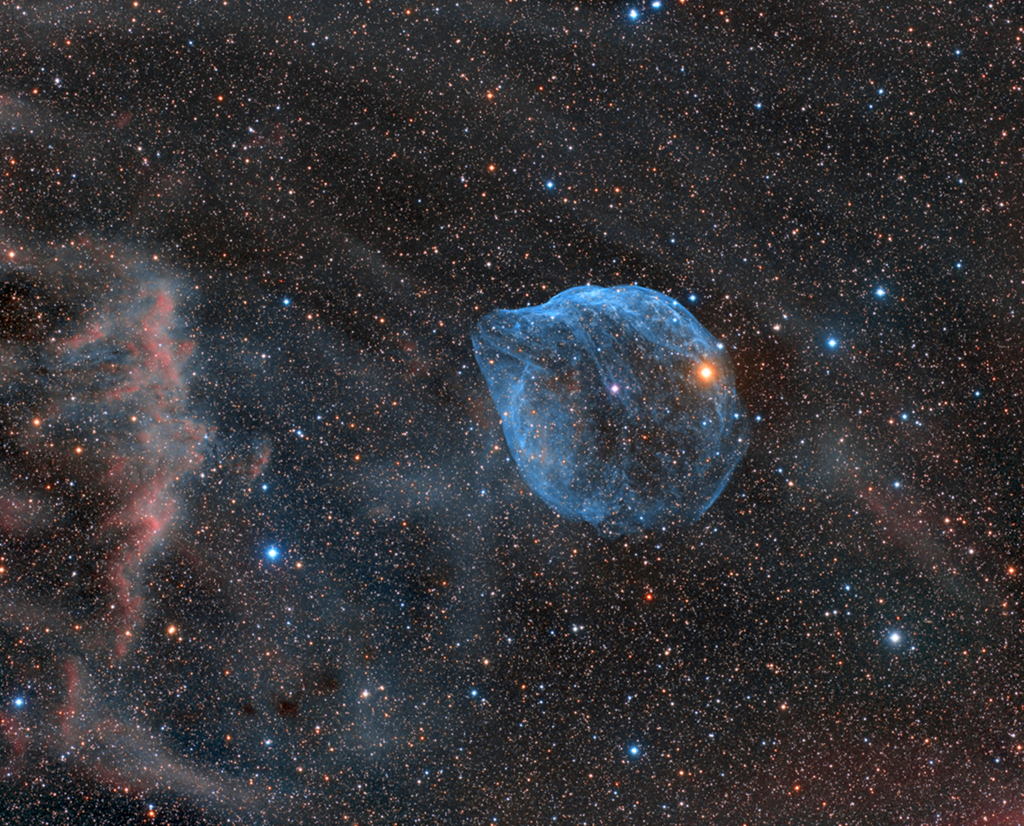
CASIS Is Changing Its Name By Pretending That Its Not
Keith's note: CASIS is clearly trying to rebrand and/or rename itself. But instead of admitting it - and do so in an open, forthright, ethical - and legal way, they are trying to use smoke and mirrors - and some outright deception and misinformation instead. I sent the following questions to CASIS and NASA today. I'll let you know if/how they respond.
"- Is this a board meeting for CASIS? Or is this a board meeting for an organization called the International Space Station U.S. National Laboratory?
- Has CASIS been dissolved? If so, when did this happen? If not, why is CASIS no longer identifying itself by its legally incorporated name?
- Is "the International Space Station U.S. National Laboratory" the new (formal) name for CASIS? If so when did the name formally change? in what state was this name change formally made? Will this name change be reflected in formal quarterly reports to NASA on the CASIS contract? Will this name be used for all payload and commercial agreements?
- If there is a new entity called "the International Space Station U.S. National Laboratory" is it a non-profit organization? A for-profit company? An NGO? A partnership? An LLC?
- If there an organization called "the International Space Station U.S. National Laboratory" does it have a formal, legally document board of directors? If so where is that information formally recorded and who are the members of that board?"
Meanwhile:
|
|
|
|
from NASA Watch http://bit.ly/2HFuHtj
via IFTTT
Sailing Over the Caribbean From the International Space Station

OSIRIS-REx stable in Bennu orbit, team refines sample collection plans
from Planetary Society Blog http://bit.ly/2Blw1fF
via IFTTT
ISS Daily Summary Report – 1/29/2019
January 30, 2019 at 12:00AM
from NASA https://go.nasa.gov/2sWi6bi
via IFTTT
2019年1月29日 星期二
Wide Field View of Great American Eclipse

Space Foundation: "The State of Space"
Space Foundation Briefing: "The State of Space"
"Space Foundation CEO Tom Zelibor's remarks will highlight the roles, challenges and opportunities space has for our national, economic and educational security and explore the critical roles our public and private sectors, as well as students, teachers, taxpayers, investors and entrepreneurs, have in the next great human adventure in space. Following Space Foundation CEO, Tom Zelibor's remarks, an industry panel moderated by award-winning journalist, Jeanne Meserve will be held, along with an audience and media Q&A availability for program participants."
Webcast at 9:00 am ET: http://bit.ly/StateofSpace2019
from NASA Watch http://bit.ly/2B8uGIY
via IFTTT
Why Is CASIS Is Making Itself Disappear?
International Space Station U.S. National Laboratory Annual Public Board Meeting
"On Friday, February 8, 2019, the International Space Station (ISS) U.S. National Laboratory will host its annual Public Board of Directors Meeting in Washington, D.C."
Keith's note: The press release says that "the International Space Station (ISS) U.S. National Laboratory will host its annual Public Board of Directors Meeting in Washington, D.C." It sends you to this link: https://www.issnationallab.org where you see "(ISS) U.S. National Laboratory" at the top of the page. If you scroll down to the bottom you see "THE ISS NATIONAL LAB IS MANAGED BY THE CENTER FOR THE ADVANCEMENT FOR SCIENCE IN SPACE, UNDER AGREEMENT WITH NASA. © COPYRIGHT 2011-2019 THE CENTER FOR THE ADVANCEMENT OF SCIENCE IN SPACE, INC."
This is not a "International Space Station U.S. National Laboratory" board meeting. There is no non-profit organization in existence by that name. There is a non-profit named CASIS - "The Center for the Advancement for Science in Space" - and this is their annual public meeting. But they don't tell you that. The officers listed in this news release and on the agenda are officers for CASIS not for the International Space Station U.S. National Laboratory. Oh yes: did I miss something? When was it announced that the ISS National Laboratory has a board of directors?
"CASIS" appears nowhere in the announcement or on the webpage. For that matter "NASA" is mentioned nowhere either. If you go to the original CASIS website address https://www.iss-casis.org/ you are automatically redirected to https://www.issnationallab.org/ "CASIS" is gone. If you go to the Internet archive you can see that a CASIS website existed as recently as 20 December 2018.
Who actually owns this "International Space Station U.S. National Laboratory" thing? Its not a non-profit. Its not a government agency. Its a thing created by Congress. CASIS does not own it - it just runs it. Or does it run the ISS National Lab since CASIS seems to be trying to make itself disappear and become the ISS National Lab instead. I wonder if the IRS knows that CASIS is operating under a new name and that it is using somewhat deceptive public statements so as to confuse people as to what this meeting is actually all about.
Meanwhile CASIS is off trying to quietly develop its own commercial entity. They have been talking to various companies about it (who are not exactly pleased to hear this). Is non-profit CASIS trying to simultaneously hide itself behind the ISS National Lab while rebranding and reinventing itself as a company to use ISS National Lab resources? Maybe they will answer this at their meeting. Stay tuned.
from NASA Watch http://bit.ly/2RXXqOI
via IFTTT
Falcon 9, Crew Dragon Roll to Launch Pad

ISS Daily Summary Report – 1/28/2019
January 29, 2019 at 12:00AM
from NASA https://go.nasa.gov/2Rm3mMp
via IFTTT
NASA's Annual Day of Remembrance Rescheduled
Keith's note: NASA Day of Remembrance events at Arlington National Cemetery will be held on 7 February.
from NASA Watch http://bit.ly/2HEtx1o
via IFTTT
2019年1月28日 星期一
Ultima Thule from New Horizons
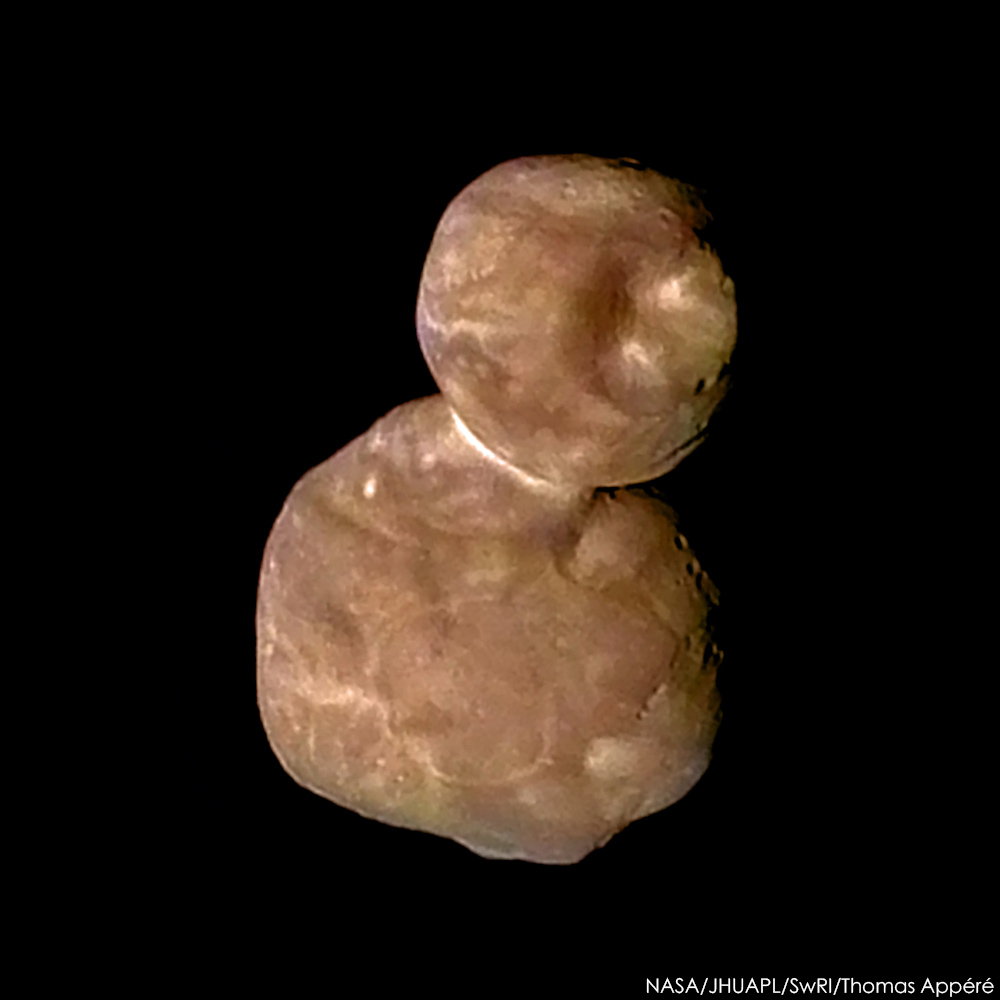
NASA Town Hall On Tuesday
Town Hall with NASA Administrator Jim Bridenstine
"Headquarters is hosting an agencywide town hall with NASA Administrator Jim Bridenstine on Tuesday, Jan. 29, at 1 - 2 p.m. EST. Please join this important discussion as we return to work and begin the process of an orderly restart that ensures employee safety and security. All employees, contractors and civil servants, are encouraged to participate in person at Headquarters in the Webb auditorium and remotely at the designated viewing location at their center. The event will air live on NASA Television (public channel), through your center cable or streaming distribution, and on the agency's website at https://www.nasa.gov/nasalive. You may submit questions securely from any computer or mobile device starting now and throughout the presentation."
from NASA Watch http://bit.ly/2CQ9Xti
via IFTTT
Remembering Space Shuttle Challenger

Welcome Back To Work, NASA
NASA Administrator Message: Thank You! Let's Get Safely Back to the Business of Exploration
"We understand the worry and confusion coming back to work may cause and we're going to do our best to keep you informed as agency systems are brought back online and you're asked to pick up where you left off more than a month ago. As you probably know, the President signed S.24, the "Federal Employee Fair Treatment Act of 2019," into law. The bill guarantees that federal civil servant workers will receive wages withheld during this shutdown, and future shutdowns. I understand our contractors are facing different challenges regarding pay and benefits and our procurement team will be working these issues in the days moving forward to try to do as much as we legally can to assist everyone affected."
from NASA Watch http://bit.ly/2Rqzsa4
via IFTTT
2019年1月27日 星期日
The Long Gas Tail of Spiral Galaxy D100

Remembering
Ancient Memorials for Modern Space Explorers, SpaceRef
"A week prior to my departure I got a call from June Scobee Rogers, the widow of Challenger's commander Dick Scobee. She was thrilled with what we were doing and asked if we'd like to place a few mementos in the inukshuk. She then described what she was sending. A day or so later a package arrived. As I opened it I told my wife, with a bit of a tear in my eye, "this is history". I had been sent one of the few items Dick Scobee had left in his briefcase when he took off for his last mission: a business card and a mission lapel pin. I am certain that his family has so little in the way of such items. As such I was really honored that the family had chosen this inukshuk we planned to build on Devon Island, as the place where such precious items would rest."
Scott Parazynski: Still on Cloud 10 (on the summit of Mt. Everest), SpaceRef
"I tied off a pair of flags I'd made to honor astronauts and cosmonauts who had perished in the line of duty (Apollo 1, Challenger, Columbia, Soyuz 1 and Soyuz 11), as I could think of no finer place on Earth to hang them. In the coming days, weeks, months and years, like their Tibetan prayer flag counterparts, they will weather under the wind, sun and snow, and slowly lift back up into the heavens."
Arctic Memorials and Starship Yearnings, SpaceRef
"Given the sheer mass of the structure, and the slow manner with which things change here, this inukshuk may well be standing 500 years from now. That should be long enough. Maybe someone serving on a starship will think to visit it."
Columbia: Thinking Back - Looking Ahead, Excerpt from "New Moon Rising", by Frank Sietzen, Jr. and Keith Cowing
"At the end of the event, Rona Ramon, Ilan's widow, spoke last. Steeling her emotions with grace and clarity, she spoke elegantly and briefly. She thanked all for coming. And then she talked of her husband, and the flight of the lost shuttle. "Our mission in space is not over" she told the hushed audience. "He was the first Israeli in space -- that means there will be more."
from NASA Watch http://bit.ly/2UlGcHY
via IFTTT
2019年1月26日 星期六
NASA Gets a Three Week Reprieve
from Planetary Society Blog http://bit.ly/2B2llSM
via IFTTT
NASA Is Open Again
The following is from @NASA: "Due to the enactment of a continuing resolution, NASA is OPEN. Employees should report to work on their next regularly scheduled workday. Please see https://t.co/aCwCTJ8Bzg for more information. "
— NASA Watch (@NASAWatch) January 26, 2019
from NASA Watch http://bit.ly/2FQoBok
via IFTTT
2019年1月25日 星期五
The Shutdown Is Over - For Three Weeks
White House and Congress have reached an agreement to end the #govermentshutdown today. Government will re-open for 3 weeks.
— NASA Watch (@NASAWatch) January 25, 2019
from NASA Watch http://bit.ly/2HxWxb2
via IFTTT
2019年1月24日 星期四
Moon Struck

Furloughs Hit LPI
Welp, as of tomorrow at 5pm CST, LPI is furloughed. No work related to the LPI will be allowed. Only work related to individual, PI-led grants can continue. I am luckily fine funding wise for a while, but many others at LPI aren't. @PlanetTreky
— Justin Filiberto (@Mars_Chlorine) January 24, 2019
from NASA Watch http://bit.ly/2FYDzI4
via IFTTT
JSC Furlough Support Open House
JSC Unites - Employee Furlough Support Open House at the Gilruth Center Destiny Ballroom on Friday, January 25th from 11a-1p. Details on https://t.co/MqFnxB9in0
— JSC SOS (@JSCSOS) January 23, 2019
from NASA Watch http://bit.ly/2CTua1B
via IFTTT
Rogozin Gets Scolded By Putin's No. 2
Russian space chief told to drop grandiose talk, get more done, Ars Technica
"On Wednesday, the prime minister of Russia, Dmitry Medvedev, expressed his displeasure with the situation. During a meeting in Moscow with senior Roscosmos officials, Medvedev made sharply critical remarks that were reported by several Russian news organizations, including Gazeta.RU and RIA Novosti. "This is a blunt and direct assertion: We need to quit projecting future plans, stop talking about where our missions will land in 2030, get to work, talk less, and do more," Medvedev said. "We need to be more active in commercializing our space industry and increase Russia's international market share of commercial launches. ... Now Medvedev, in a public setting, has called Rogozin out for this tactic. He also expressed concern about Russia's success in attracting commercial satellite launches amid the rise of SpaceX and other international competitors."
from NASA Watch http://bit.ly/2FM7Qe7
via IFTTT
Unpaid NASA Rocket Scientists Now Clean NASA's Toilets
@JohnCornyn @SenTedCruz @RepBrianBabin This is our reality at the Johnson Space Center. We now have no custodial services while we work without pay to keep the International Space Station operating😡#EndTheShutdown pic.twitter.com/QjDDpJuxwo
— Elizabeth Blome (@SpaceEliz) January 24, 2019
from NASA Watch http://bit.ly/2HDuVl0
via IFTTT
NASA's Ability To Process Research Proposals Is Shutting Down
Keith's note: If you go to NASA NSPIRES (NASA Solicitation and Proposal Integrated Review and Evaluation System) website you will see the following notice:
"The NSPIRES Help Desk is not available due to a power outage in the building. Expect responses to your email inquiries within 24 hours. The phone service is not available. If the partial federal shutdown extends past January 31, then NSPIRES will be unavailable due to a lack of funding."
SMD AA Thomas Zurbuchen issued a series of tweets today via @Dr_ThomasZ: "NASA recognizes that researchers plan research, budgets & hiring 6 - 12 months in advance due to proposal evaluation & selection timelines. Unfortunately, during the shutdown, Notices of Intent (NOIs) and proposal due dates have to be postponed to undetermined future dates. The postponements related to the partial government shutdown have introduced uncertainty into this planning and may lead to some adjustments. A blanket amendment to Research Opportunities in Space and Earth (ROSES) 2018 will be issued, noting that:
1) All due dates should be assumed to be "TBD" as long as the government continues to be shut down.
2) New dates will be announced as soon as possible once the government reopens
3) The ROSES 2019 initially planned on Feb. 14 will be delayed significantly
4) There will be no ROSES-18 or ROSES-19 proposal due dates earlier than 60 days following the end of the partial government shutdown."
from NASA Watch http://bit.ly/2RdjwrA
via IFTTT
2019年1月23日 星期三
Matterhorn, Moon, and Meteor
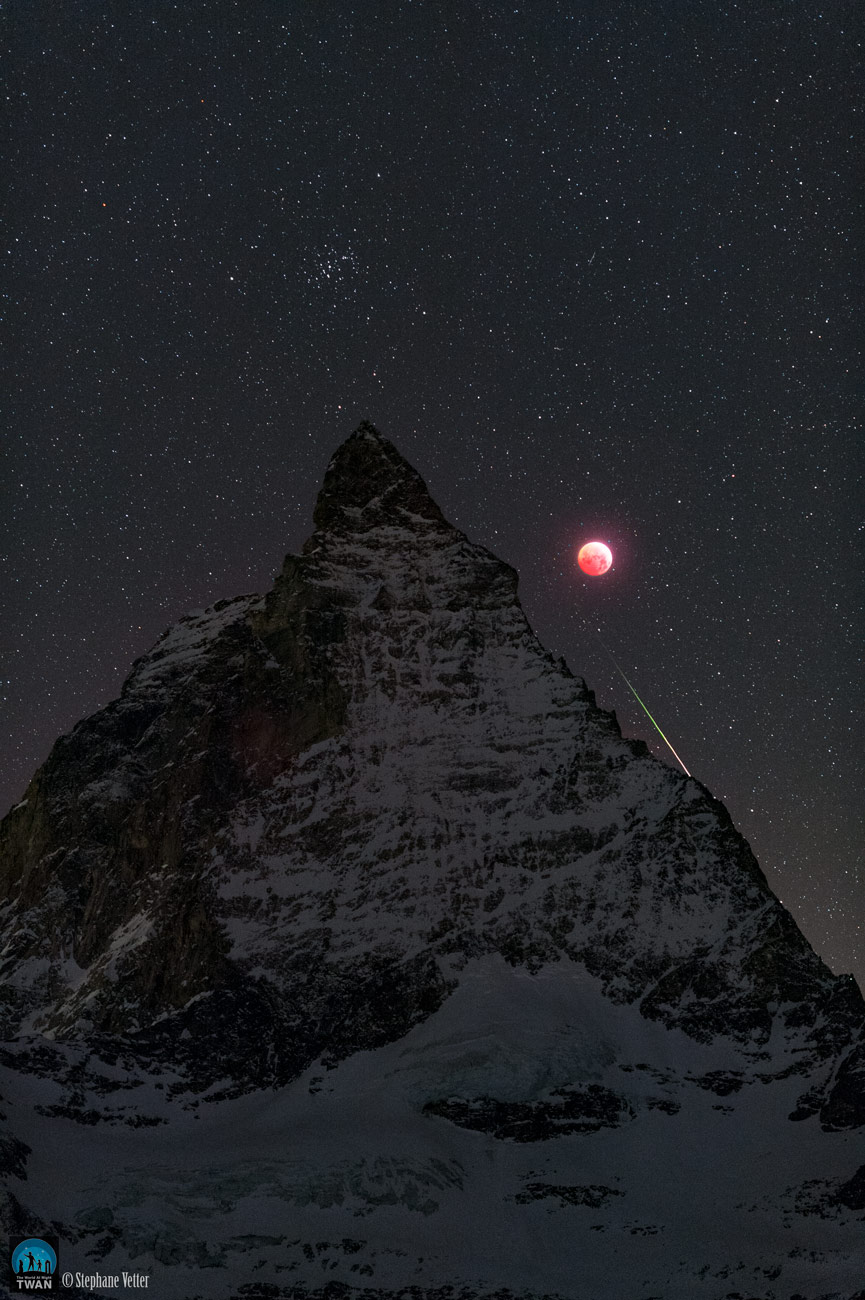
Planetary Society Doesn't Care Much About Loss Of Astronauts
This is absolutely awful @elakdawalla People have died in service to @NASA and their country and you think that an annual memorial to their sacrifice is "not the most important thing right now"? Really? If anything it is more important. @exploreplanets @JimBridenstine #NASA pic.twitter.com/xz2PEN1COT
— NASA Watch (@NASAWatch) January 23, 2019
from NASA Watch http://bit.ly/2Ht8ajA
via IFTTT
NASA Furlough Update
NASA Internal Employee Memo: An Update to the Furlough
"While many of you may not immediately see this message, I wanted to send a note of thanks to the entire NASA family. Your dedication is an inspiration to everyone caught up in this furlough and your ongoing work is vital to the safety and success of NASA. During a lapse in funding by the federal government there are many routines and procedures that must be followed. Many of these happen behind the scenes. However, one of those procedures will be visible as a second round of furlough notices will be distributed. After the first 30 days during a lapse of funding, agencies are required to deliver another furlough notice. You do not need to take any additional action.
I want you to know how much I appreciate your patience and commitment during this unique time in American history. I understand this furlough is a real hardship for many of you and while civil servants will eventually receive back pay, the situation is not as clear for many of our family members in the contracting community. We are working with procurement and contracting officers to mitigate the impacts for you as we all look forward to the ultimate resolution of this lapse in appropriations."
from NASA Watch http://bit.ly/2FL4vvw
via IFTTT
What’s next for China in lunar exploration?
from Planetary Society Blog http://bit.ly/2Ta068u
via IFTTT
2019年1月22日 星期二
Did Trump Really Want Humans On Mars By 2020?
Trump Reportedly Demanded That NASA Fly a Manned Mission to Mars by 2020, Splinter
"When the NASA administrator explained that it would take until the 2030s to send a manned mission, Trump didn't accept it. "Trump bristled," Sims writes. The president allegedly asked, "But is there any way we could do it by the end of my first term?" President Deals then tried to negotiate. Trump did not seem worried about the time. Sims wrote that he leaned in toward Lightfoot and made him an offer. "But what if I gave you all the money you could ever need to do it?" Trump asked. "What if we sent NASA's budget through the roof, but focused entirely on that instead of whatever else you're doing now. Could it work then?" Lightfoot told him he was sorry, but he didn't think it was possible. This left Trump "visibly disappointed," Sims wrote. "But I tried to refocus him on the task at hand. We were now about 90 seconds from going live."
from NASA Watch http://bit.ly/2Wd90E7
via IFTTT
NASA's Annual Day of Remembrance Postponed
NASA's annual Day of Remembrance Postponed
"NASA's annual Day of Remembrance reminds us to reflect on not just the sacrifices that have been made by our fallen family, friends, and co-workers, but also to remind us of our core values of safety, integrity, and teamwork as we carry out our history-making missions. Unfortunately, most of our NASA family are on furlough and we recognize your participation in many of the Day of Remembrance activities would be a challenge. As a result, we have decided to delay our observance until we are all able to come together as a family to remember our fallen astronauts and those who have given their life in pursuit of exploration. An updated time for our commemoration has not yet been selected, but we will make this a priority once the furlough is over and everyone is back to work."
from NASA Watch http://bit.ly/2WbnXXu
via IFTTT
Israeli Beresheet Moon lander ships to Florida for mid-February launch
from Planetary Society Blog http://bit.ly/2FH9ptw
via IFTTT
NASA Has Been In Safe Mode For A Month
In the 60 years that it has existed @NASA has never been turned off for a month. pic.twitter.com/MDVinW9osJ
— NASA Watch (@NASAWatch) January 22, 2019
from NASA Watch http://bit.ly/2FTyz7B
via IFTTT
NASA GRC Shutdown Event
"The Great Lakes Science Center is hosting an event on Thursday, January 24, from 10 a.m. to noon for the GRC Civil Service and Support Service Contractor Workforce impacted by the partial government shutdown. This is an opportunity to receive community resource information as well as to interact and connect with GRC colleagues. We understand GLSC will be inviting representatives and/or will have information available from local financial institutions, community organizations, the employee assistance program and the Ohio Unemployment Office. In addition, people will be on hand to answer questions about NASA HR related issues, government employee benefits, outside employment rules, and other available resources. The science center will provide free parking to attendees and as always; NASA Glenn employees and contractors, as well as their immediate family, will receive free admission to the Science Center. Attendance is entirely voluntary."
from NASA Watch http://bit.ly/2T3uNMx
via IFTTT
2019年1月21日 星期一
Lunar Eclipse over Cologne Cathedral
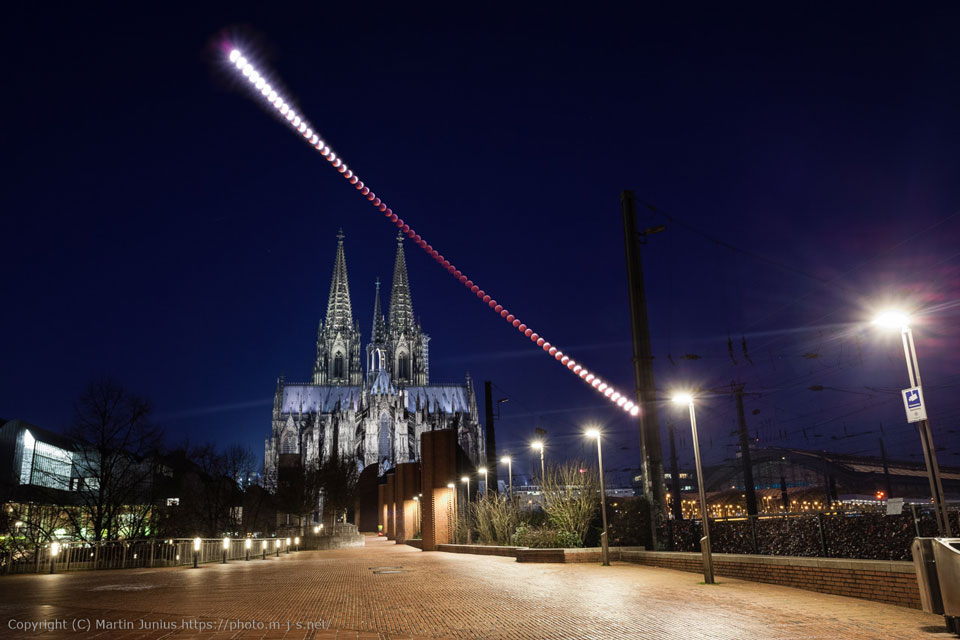
2019年1月20日 星期日
InSight Lander Takes Selfie on Mars

2019年1月19日 星期六
Some Countries Think That Their Space Program Is Important
Some countries think that their space program is important. #NASA @NASA #governmentshutdown #shutdown pic.twitter.com/gw3zM6tczm
— NASA Watch (@NASAWatch) January 19, 2019
from NASA Watch http://bit.ly/2U3Yy04
via IFTTT
NASA Shutdown Update
Shutdown stalemate spurs fears of exodus from NASA Ames, Mountain View Voice
"A lot of our talented folks, they've already found other jobs because they can't afford the loss of these paychecks," she said. "At this point, it's hard for us to justify what we consider meaningful work for the American taxpayer." The experience was all too familiar for Matt Linton, a computer security engineer who left NASA in 2013 during a similar government shutdown that lasted about two weeks. At the time, "a major tech employer" in Mountain View called him up to offer a job with an 85 percent pay increase. Their pitch was simple: Sure, you love working at NASA, but we can actually pay you. With a mortgage on a Sunnyvale house and a newborn child, Linton said he couldn't find a way to say no."
Unpaid NASA workers protect critical missions during government shutdown, CBS
"But at some point, if the government remains in partial shutdown and NASA continues to be unable to pay its mounting bills, projects on the ground, at least, could face slowdowns or work stoppages. Insiders say the agency is probably on solid ground through the end of the month, but if the shutdown extends very far into February, serious consequences, in terms of delays and higher costs, may be unavoidable."
JPL May Have to "Adjust Staffing Levels" if Government Shutdown Continues Into February, Pasadena Now
"Caltech President Thomas Rosenbaum on Tuesday issued a message for the Caltech community saying the institute's operations continue despite the shutdown, but added "future negative consequences" could be possible - especially with regards to JPL. "The most significant impact is on JPL," Rosenbaum said. "Prior to the shutdown, laboratory management worked with NASA to maximize the available funding for JPL's tasks. To date, JPL has been able to avoid furloughs, but may have to adjust staffing levels if the shutdown continues into February."
Doug Jones Risks His Alabama Senate Seat Over the Shutdown and the Wall, NY Times
"In Huntsville, the effect of empty offices at NASA's Marshall Space Flight Center on the Army's Redstone Arsenal base has rippled through the contractors, restaurants and hotels that power Rocket City. "For us, because we're a small town, the shutdown is kind of difficult. But there's also things in politics that may be worth doing," said Angie Gates, whose small family restaurant has lost patrons. "If Doug Jones doesn't support the wall, I don't support him."
Furloughed NASA employee's dream job turning into a nightmare from government shutdown, ABC 5
"A dream job quickly turning into a nightmare for one furloughed NASA Glenn Research Center employee. "They have that big sign that says research and development for the benefit of all. And my first day driving in there really made me feel like this is it, this is home," The worker said. "That job security is what drew me to it" But now he's sitting at home waiting for the shutdown to end to get back to work. "I really don't have a ton of savings built up, I just have a month or two set aside so if this lasts another week or two I'm going to be in deep water." The worker said. "I'm going to have to be talking to my landlord, talking to my creditors and telling them this is where I'm at and pretty much being at their mercy."
Shutdown imperils NASA's decadelong ice-measuring campaign, Science
"The spreading effects of the partial U.S. government shutdown have reached Earth's melting poles. IceBridge, a decadelong NASA aerial campaign meant to secure a seamless record of ice loss, has had to sacrifice at least half of what was supposed to be its final spring deployment, its scientists say. The shortened mission threatens a crucial plan to collect overlapping data with a new ice-monitoring satellite called the Ice, Cloud, and Land Elevation Satellite (ICESat)-2. The nearly monthlong spending impasse between Congress and President Donald Trump, "throws a giant wrench into that long-developed plan," says John Sonntag, an IceBridge mission scientist at Goddard Space Flight Center in Greenbelt, Maryland."
NASA postdocs hit by shutdown get emergency lifeline, Nature
"Many of the NASA fellows are foreign citizens on J-1 visas, who would have to leave the United States within 30 days if they lost their jobs. "Our understanding is that the approach we're taking means that the J-1s can continue uninterrupted," says White. That doesn't reduce the anxiety of one fellow on a J-1 visa, who asked to remain anonymous to avoid any potential retaliation. "This is a big point of concern for many of the postdocs," the person says. "With this kind of visa we cannot look for another job. That's really, really scary."
from NASA Watch http://bit.ly/2FFpsID
via IFTTT
2019年1月18日 星期五
Total Lunar Eclipse at Moonset
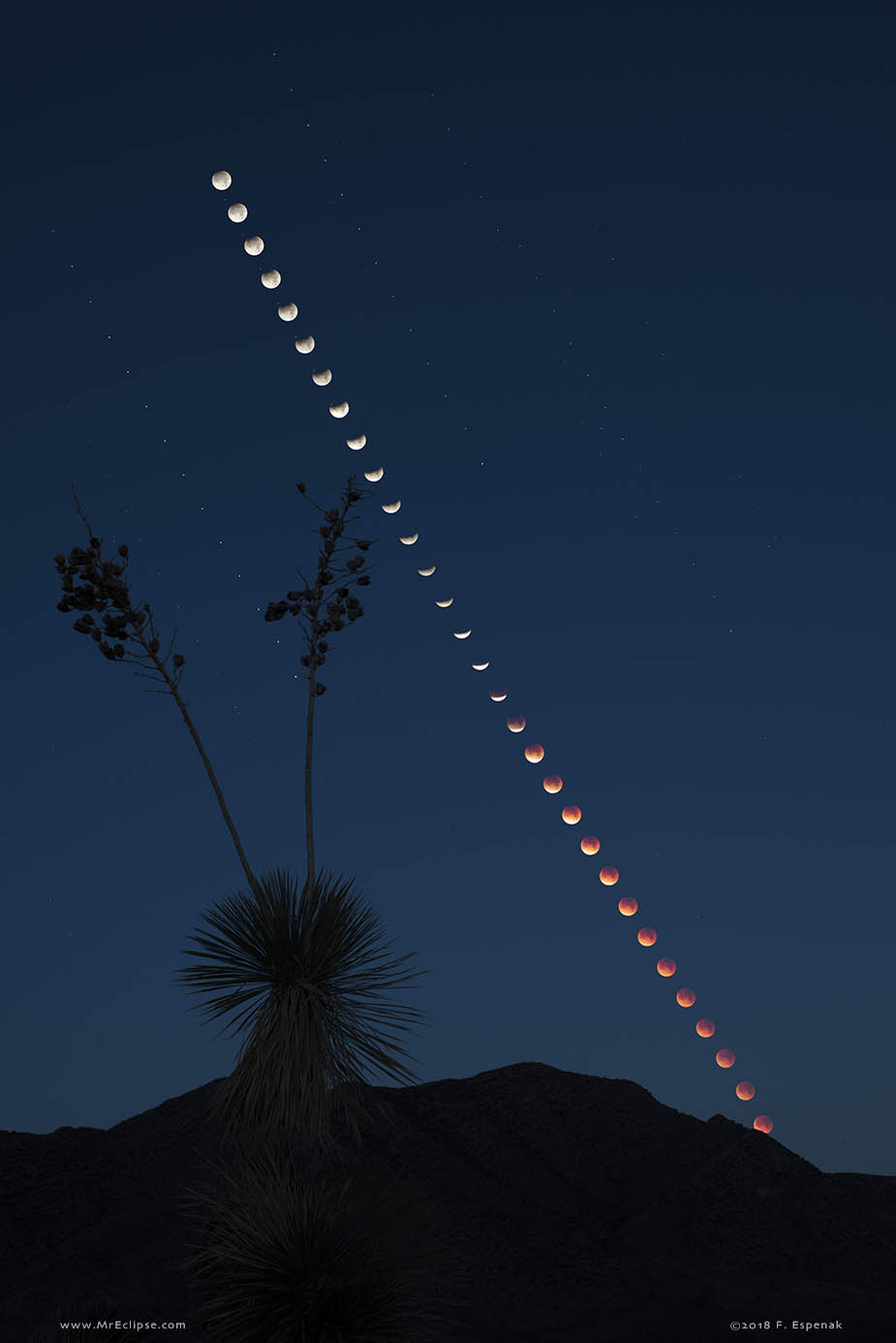
Shutdown Update
The effects of the shutdown are steadily increasing, including for the #aerospace & defense industry. Our new series, which will continue each week until the government is fully funded, shares the impact of the #GovernmentShutdown on A&D. Read more: https://t.co/f0YIAehYQQ
— Aerospace Industries (@AIAspeaks) January 18, 2019
AAS community, we have put together (and are regularly updating) a "Shutdown Central" page on our website to be a source of information. If you have more information to add or stories to share, please e-mail us at shutdown2019@aas.org. https://t.co/XmOAdUUrhy
— AAS Public Policy (@AAS_Policy) January 18, 2019
One of @NASA's main problems right now is communicating with its workforce since memos and updates are sent to government and contractor email accounts that cannot be accessed during the #governmentshutdown pic.twitter.com/RPnOQSENj6
— NASA Watch (@NASAWatch) January 18, 2019
from NASA Watch http://bit.ly/2AMxpYj
via IFTTT
Miseries mount as shutdown drags on
from Planetary Society Blog http://bit.ly/2sBrlgC
via IFTTT
2019年1月17日 星期四
Uber Driver Offers Free Rides In Silicon Valley
I am an Uber driver in the Bay Area and I am offering free rides to government employees during the shut down. If you live in Scott valley, Santa Cruz, Capitola, Soquel, Aptos ,Freedom, Watsonville please Just gives me a Call at (8319008444) and I will pick you up for free.
— Khaled W Moslimany (@kwm009) January 18, 2019
from NASA Watch http://bit.ly/2RAIKoR
via IFTTT
NASA Civil Servant Unions: Remember The Contractor Employees
FYI @NASA employee unions: when you have these events for furloughed people remember that its not just civil servants who aren't working. Its the larger contractor community too. Civil servants will be paid. Contractor employees have no such assurances. #Governmentshutdown pic.twitter.com/LDbCbps50N
— NASA Watch (@NASAWatch) January 17, 2019
from NASA Watch http://bit.ly/2RVW72e
via IFTTT
NASA Shutdown Update
"I am reaching out on behalf of NASA's leadership to provide you with an update on the government shutdown and provide information and resources during this difficult time. While some of this information may be repetitive, we wanted to take this opportunity to both provide you with the updated information we currently have as well as highlight important issues. First, I understand that this is a difficult time for everyone. So, I would like to thank you all for your commitment and patience as the lapse in funding continues. As a reminder, important information is being added to NASA's shutdown public website on a regular basis so please remember to visit often."
Temporary Opportunities For People Affected During Shutdown (TOPAS), LinkedIn
NASA employess have created a LinkedIn Group to share Government Shutdown information: "The group offers people affected by shutdown chance to look for temporary opportunity. Businesses can find talented workforce to solve problems on temporary basis without long-term commitment."
Funding furloughed NASA postdocs, GoFundMe
"This is an emergency for these folks, both financially and professionally. A lack of funding for them will push them to find other jobs, and could lead to a significant brain drain for the United States space sciences community. So we are starting a GoFundMe campaign to allow them to continue their research during the government shutdown."
from NASA Watch http://bit.ly/2DfBdmp
via IFTTT
2019年1月16日 星期三
Cabin Under the Stars
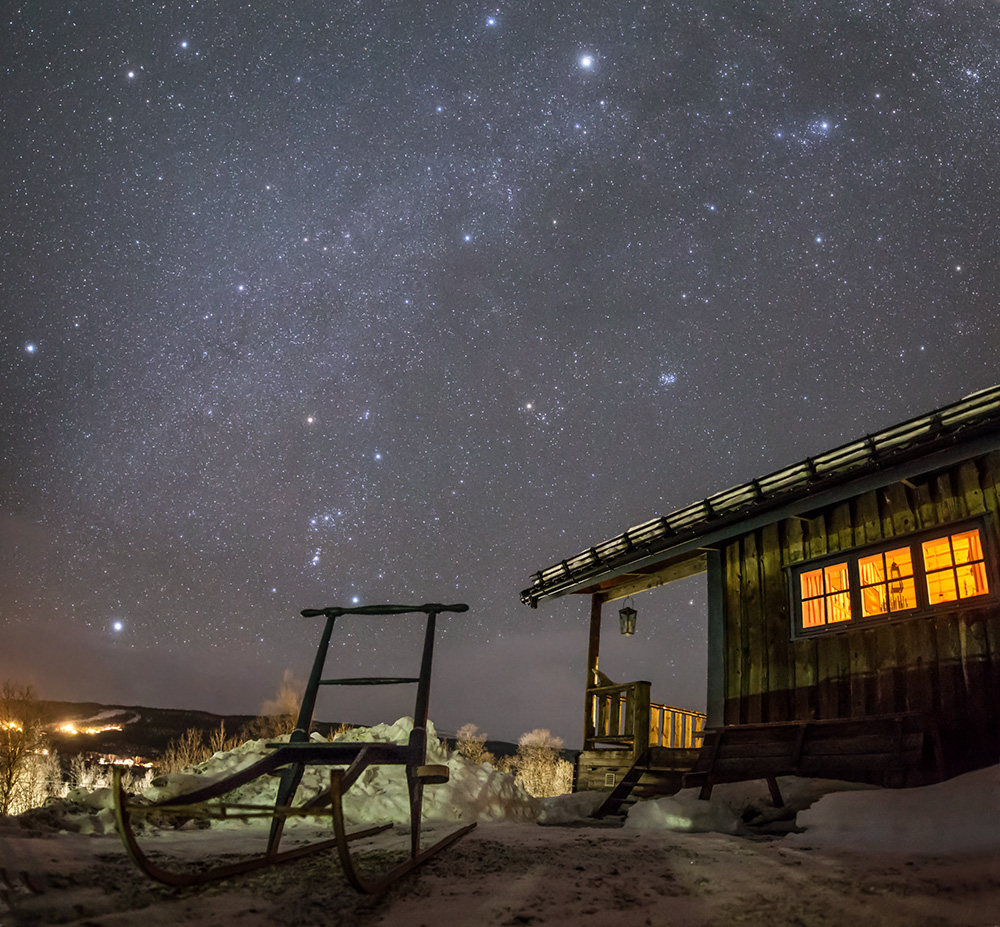
The Shutdown Is Spreading
Space Sciences Institute just issued a stop-work order to everyone there funded by a Federal grant (which I guess is almost everyone). #ShutdownStories
— M.-M. Mac Low (@astrocurator) January 17, 2019
The NASA Postdoctoral Program contract runs out of money tomorrow. This means its fellows - some of the best and brightest space scientists in the world - will go without pay starting Friday. These folks are contractors, which means they aren't covered by the backpay bill.
— Shawn Domagal-Goldman (@shawndgoldman) January 17, 2019
from NASA Watch http://bit.ly/2VVZLbn
via IFTTT
NASA's Exploration Of The Cosmos Hobbled By Terrestrial Politics
#NASA has hurled technology out of our solar system and has peered back at the dawn of creation. Yet this all comes to a halt when politicians back on Earth argue instead of govern. #governmentshutdown #shutdown pic.twitter.com/FB6FjuJu25
— NASA Watch (@NASAWatch) January 16, 2019
from NASA Watch http://bit.ly/2DeUiFm
via IFTTT